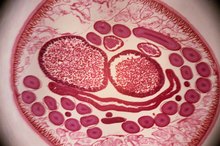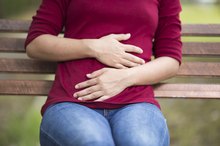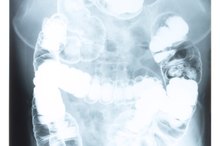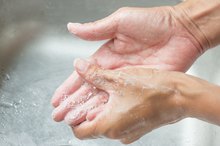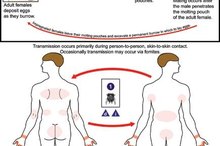What does fact checked mean?
At Healthfully, we strive to deliver objective content that is accurate and up-to-date. Our team periodically reviews articles in order to ensure content quality. The sources cited below consist of evidence from peer-reviewed journals, prominent medical organizations, academic associations, and government data.
The information contained on this site is for informational purposes only, and should not be used as a substitute for the advice of a professional health care provider. Please check with the appropriate physician regarding health questions and concerns. Although we strive to deliver accurate and up-to-date information, no guarantee to that effect is made.
How to Know If Pinworms Are Dead
Pinworms are tiny parasites that infect the intestines. A common problem that primarily affects children, pinworms are a nuisance but do not cause any significant harm. Also called threadworms, pinworms are highly contagious and are contracted through accidental ingestion of the eggs. The symptoms of pinworms include itching in the anal or sometimes vaginal area, and restless sleep. The treatment of a pinworm infection is relatively simple 2.
If you are experiencing serious medical symptoms, seek emergency treatment immediately.
Assess the presence of pinworms in the child or individual displaying symptoms such as itching in the anal area. According to the Mayo Clinic, this can be done by using a piece of clear cellophane tape to take samples from the anus of the infected individual. Do this in the morning prior to bathing or any trips to the bathroom. The pinworm eggs and sometimes a pinworm will adhere to the tape.
Symptoms of Roundworms in People
Learn More
Confirm that the child or individual has a pinworm infection by taking the piece of cellophane tape to your doctor for a diagnosis. Your doctor will prescribe an anti-worm medication such as mebendazole or pyrantel.
Treat the pinworms with the prescribed medication according to your doctor's instructions. Your doctor may recommend treating all family members as a preventative measure, as pinworms are highly contagious.
Jock Itch in Children
Learn More
Complete the entire course of medication. Many anti-worm medications take the form of a single dose repeated after a period of two weeks.
Wait approximately one week for the symptoms to subside. The itching in the anal area may last up to a week after the medication is finished.
Assess the condition of the infected individual or child following the course of medication and the waiting period. If the symptoms are gone, you've successfully treated the pinworm infection, and the pinworms and their eggs are dead.
Visit your doctor if the symptoms of the pinworm infection do not clear up following treatment 2.
Tips
To prevent recurring infestations, wash your hands frequently, change your underwear and shower daily, and keep your fingernails clean and short. Discourage children from biting their nails and scratching their bottoms.
Related Articles
References
- KidsHealth; Infections: Pinworm
- Mayo Clinic; Pinworm Infection: Treatment and Drugs
- Centers for Disease Control and Prevention. Pinworm Infection FAQs. Updated January 10, 2013.
- KidsHealth. Pinworm. Updated July 2017.
- Schroeder JC, Jones D, Maranich A.Peripheral Eosinophilia Found in Pediatric Enterobius vermicularis Infections. Clin Pediatr (Phila). 2019 Jan;58(1):13-16. doi:10.1177/0009922818805193.
- Yang CA, Liang C, Lin CL, Hsiao CT, Peng CT, Lin HC, Chang JG Impact of Enterobius vermicularis infection and mebendazole treatment on intestinal microbiota and host immune response. PLoS Negl Trop Dis. 2017 Sep 25;11(9):e0005963. doi:10.1371/journal.pntd.0005963.
Tips
- To prevent recurring infestations, wash your hands frequently, change your underwear and shower daily, and keep your fingernails clean and short. Discourage children from biting their nails and scratching their bottoms.
